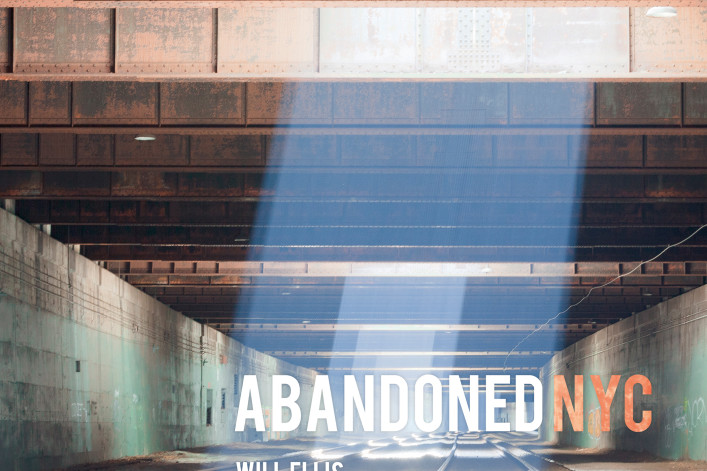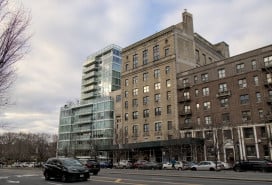NYC photographer captures city buildings in decay

With all the new construction dominating the New York skyline, it’s hard to imagine there are any structures still lying empty in the city. But as photographer and blogger Will Ellis reveals in his book “Abandoned NYC,” there are hospitals, military facilities and grand ballrooms abandoned and decaying -- though not for much longer as developers circle.
Originally from San Antonio and now living in Sunset Park, Ellis here explains why there is beauty in decay, what they tell us about the history of New York, and why the term “ruin porn” is unfair.
Why shoot abandoned buildings?
I’ve always been in interested in spooky stuff, and when I’d see abandoned buildings, would wonder what they look like inside. The first one I went into was a huge empty warehouse in Red Hook. The sense of adventure and rush of adrenaline got me hooked.
Some of the images are heartbreaking. Do you see beauty in the decay?
I think a lot of people see these pictures and their immediate reaction is, that’s so sad. In the case of the Harlem Renaissance Ballroom (where the floor is covered in mushrooms) it really does have an important place in history and it’s a loss. As a photographer I’m always looking for light, and there’s a certain quality of light you find in these places, so that aspect is always beautiful.
Are you also photographing them for the historical record?
For me it’s about documenting these places before they are gone, but if I am being honest, I wouldn’t be photographing historical buildings that didn’t happen to look beautiful and mysterious.
Images of abandoned sites are sometimes termed “ruin porn.” Fair?
There is criticism of these kinds of photographs, the idea of fetishizing decay when communities are in ruins and people are suffering. When you talk about Detroit it really applies, but in NYC these are the exceptions to the rule.
What do you find inside these buildings?
Among people who do this, the more prized buildings are the ones that are untouched or undiscovered, and you don’t get that in NYC because it’s so densely populated. So here you will find squatters have used the space, teenagers, graffiti artists. I’m interested in the history of the places before and their second life since, so it interests me.
Why were some of these buildings left to rot for so long?
Many people ask why the buildings weren’t used for housing or a homeless shelter, and they don’t understand the financial reality of doing something like that. You need an incredible amount of money to rehabilitate a place.
Ever been busted trespassing?
No arrests! But there are all kinds of dangers, and the first thing I worry about is falling through a floor, getting trapped, or falling down an elevator shaft. I have had a couple of close calls, but nothing too serious.
 Forty years of pigeon droppings at Creedmoor State Hospital Building 25.
Forty years of pigeon droppings at Creedmoor State Hospital Building 25.
Favorite abandoned site?
Creedmoor Hospital [overtaken by pigeons], I had never seen anything like that. I know it’s grotesque and surreal, but I will never forget that.
What does it say about New York that many of these sites are slated for development?
It’s extraordinary they were in an abandoned state for thirty, forty years and now in the past three years the market bounced back and they’re all in the crosshairs of developers. It’s good when the buildings are being renovated and not demolished, that way their history [via their facades] is preserved.
But doesn’t the city lose something in the process?
Few people appreciate having an abandoned building in their neighborhood. They’re eyesores and not doing anything to serve their communities. But I think we’re losing something that is maybe not tangible, but sentimental. These buildings make the city more interesting and mysterious. We are losing this quality of older New York.
You say you are running out of abandoned spaces to discover.
Yes, trying to find those unknown places is getting difficult. I’m going further out into New Jersey, the Hudson Valley, the Poconos. Interestingly, a lot of those places relate to the history of New York City. The asylums and Grossingers [resort in the Catskills] served people who came from the city.
 Poolside at Grossingers Resort
Poolside at Grossingers Resort
Related:
Benjamin Noriega-Ortiz's foolproof NYC design tricks, from lucite to shag carpets
New Yorkers' dinner rituals are lonely but strangely beautiful
An elevator view of the NYC skyline
Squeezing a family into 450 square feet inspired a Brooklyn photog's voyeuristic portrait series

























